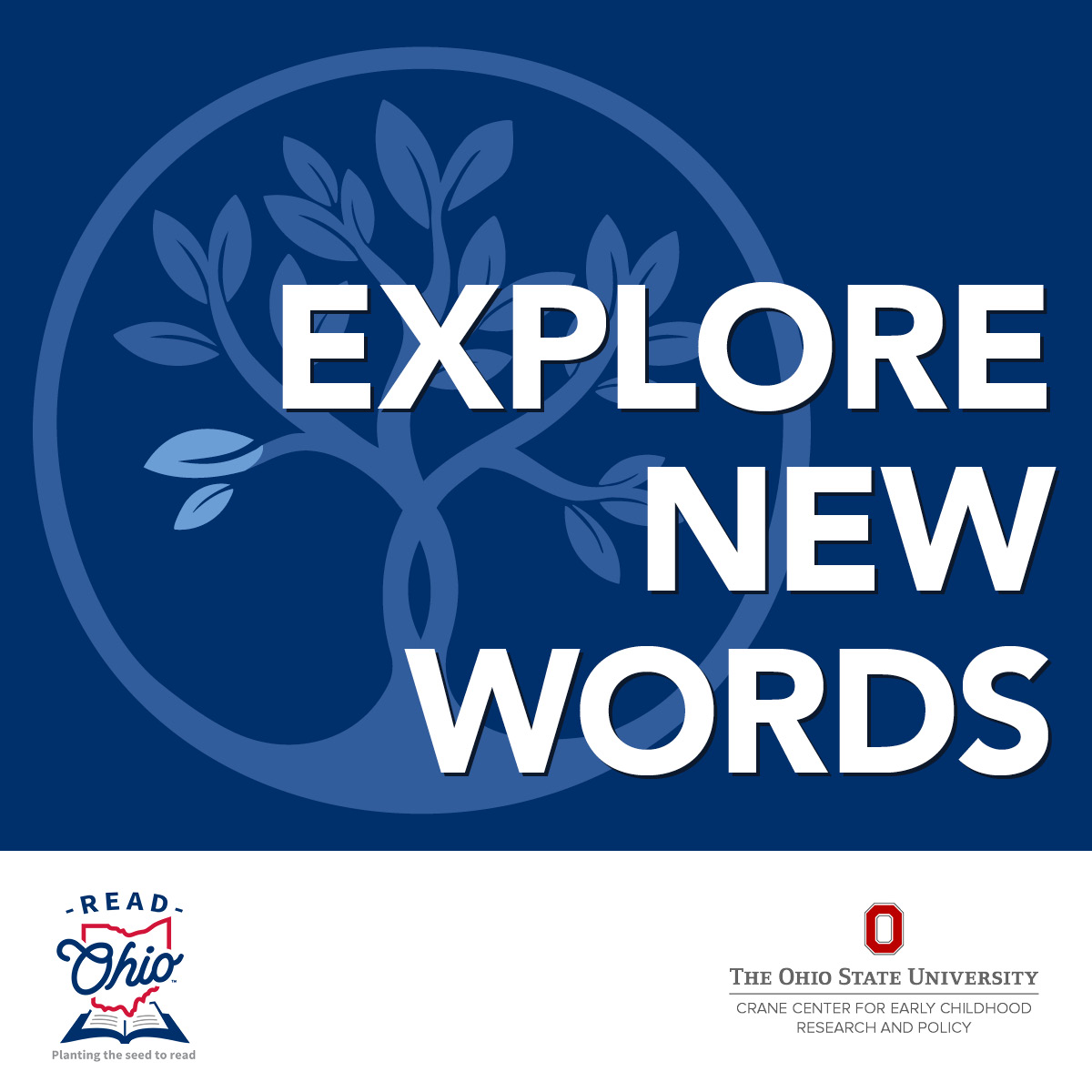Research behind Read Together, Grow Together
When adults read with young children, it helps them develop important early literacy skills. Early literacy skills are the needed foundational skills for a child’s future success in school and in life. The Crane Center for Early Childhood Research and Policy partnered with Ohio’s ReadOhio initiative to share practices that Ohio families can use to help their child develop these critical skills when they read books together. The Read Together, Grow Together practices are eight easy tips that families can use to make the most of shared book reading.

How were these reading best practices selected?
One of the Crane Center’s key areas of research is on how children learn various skills necessary for reading success. In consultation with Crane’s executive director Dr. Laura Justice, an expert in early cognitive development and literacy, Crane researchers examined which key literacy skills in young children predict later reading outcomes and can easily be implemented at home.
Read Together, Grow Together was created after a review of literature on early literacy, including a landmark report published by the National Early Literacy Panel (NELP). NELP was convened in 2002 to review and synthesize scientific research on the development of early literacy skills in children ages zero to five. In 2008, they issued a comprehensive report on the scientific evidence behind early literacy development and on home and family influences that shape that development, including shared storybook reading. The panel of researchers identified 11 early skills that consistently predicted later literacy skills and achievement, including Alphabet Knowledge, Phonological Awareness, Rapid Automatic Naming (RAN) of Letters or Digits, RAN of Objects or Colors, Writing or Writing Name, Phonological Memory, Concepts About Print, Print Knowledge, Reading Readiness, Oral Language, and Visual Processing.
Of these skills, five are malleable, meaning that targeted activities and interventions can help the skills develop. The malleable skills are: Alphabet Knowledge, Phonological Awareness, Writing or Writing Name, Concepts about Print/Print Knowledge, and Oral Language.
In addition to examining the NELP report, researchers also reviewed the evidence-based reading techniques employed by the Sit Together and Read (STAR) program, a set of interactive and innovative read-aloud practices designed for educators and caregivers to strengthen young children’s print knowledge and literacy skills through shared story book reading. Considerable evidence supports the causal relations between STAR practices and improved literacy skills for children.
Research-based tips








Completion of these reviews led to the identification Read Together, Grow Together’s eight key skills for home-learning environments:
- Repetitive Reading (Read Over and Over)
- Rhyme Awareness (It’s Time to Rhyme!)
- Alphabet Knowledge (ABC’s)
- Name-Writing Skills (Name Writing)
- Print-Concept Knowledge (Learn about Print)
- Vocabulary Knowledge (Explore New Words)
- Oral Language (Talk About the Book)
- Motivation/Engagement Toward Reading (Make Reading Fun)
Translating the research
These eight skill areas are grounded in science and are meant to be accessible to families. The evidence underlying these skills was translated into language for any parent, caregiver, or adult to use while reading with a young child. The skills are further demonstrated through videos filmed with real Ohio families illustrating many of the tips in action during their day-to-day routines.
Families can access downloadable fact sheets, view or share the videos, and find more information on the website or social media (X, formerly Twitter, or LinkedIn).

